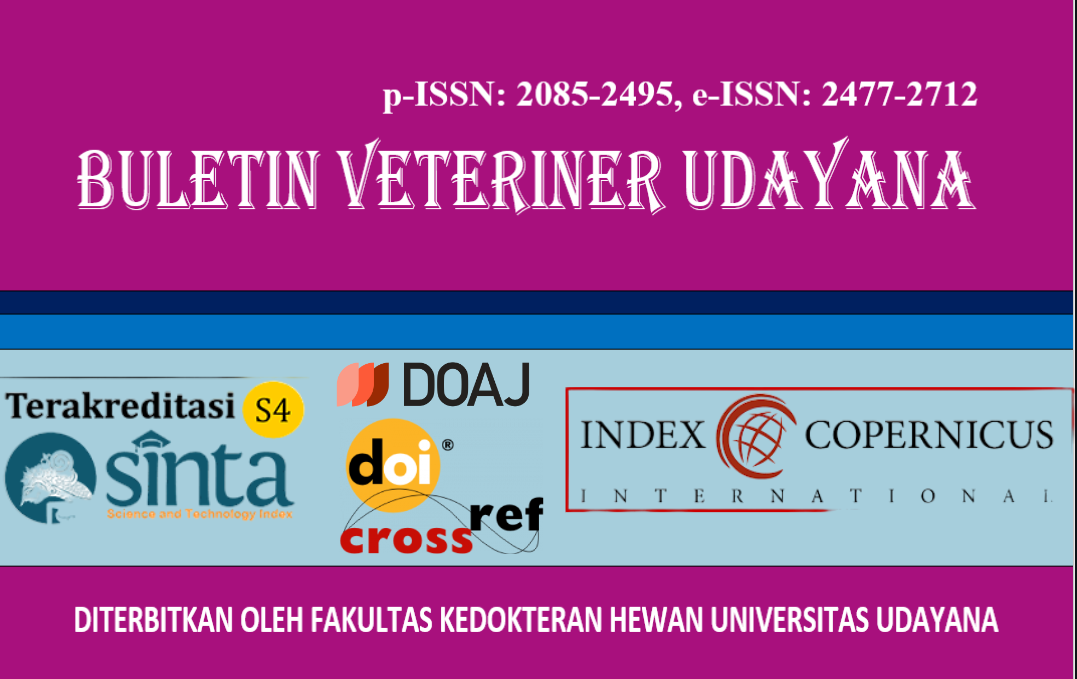COMPARISON OF ANTIBODY RESPONSE AND POST-VACCINATION REACTION IN MICE FOLLOWING SUBCUTANEOUS ADMINISTRATION OF ASF DNA VACCINE FORMULATED WITH W/O/W AND POLYMER ADJUVANTS
DOI:
https://doi.org/10.24843/bulvet.2025.v17.i04.p20Keywords:
African Swine Fever (ASF), DNA vaccine, adjuvant, antibody, ELISA, post-vaccination reaction.Abstract
African Swine Fever (ASF) is a highly contagious hemorrhagic viral disease in pigs, and currently, no effective vaccine is available to prevent it. Among the vaccination strategies currently being explored is the DNA vaccine. This study aims to compare the antibody levels and post-vaccination reactions of the ASF DNA Vaccine containing A224L and A276R genes formulated with two types of adjuvants: W/O/W adjuvant (Montanide ISA 201 VG) and polymer adjuvant (Montanide Gel01) in mice. Each mice was vaccinated subcutaneously with 25 µg of plasmid encapsulated with the respective adjuvant. Serum samples were collected at weeks 1, 2, 3, and 4. Antibody levels against A224L and A276R proteins were detected by ELISA test using synthetic peptides as antigens. The optical density (OD) values from the ELISA were statistically analyzed using the Kruskal-Wallis test with the SPSS version 30. Post-vaccination reactions were visually observed and documented through photographs at various stages of development. This study concludes that the formulation of ASF DNA vaccine with W/O/W and polymer adjuvants generates antibody levels that are not significantly different (p > 0,05), but the polymer adjuvant exhibited a better safety profile. Additional studies are necessary to explore different W/O/W adjuvant concentrations in order to reduce the risk of local reactions without affecting efficacy.




